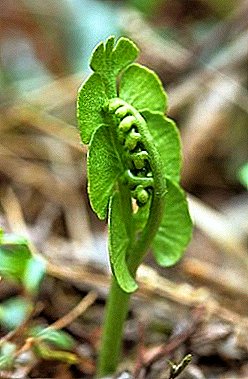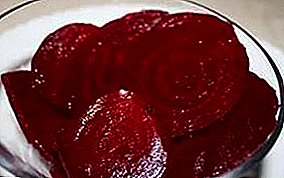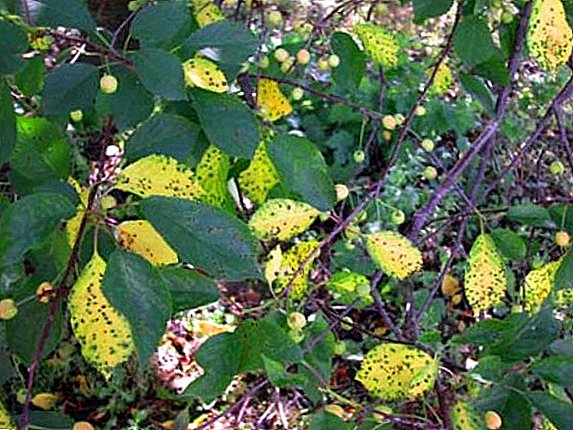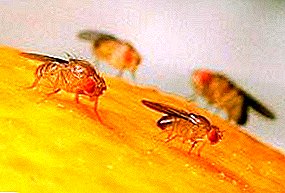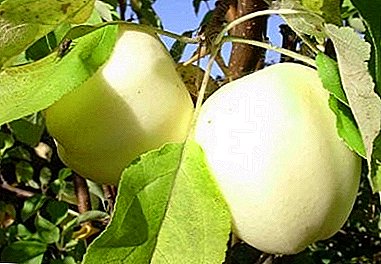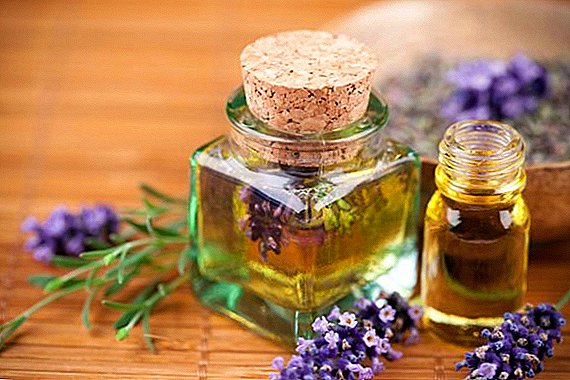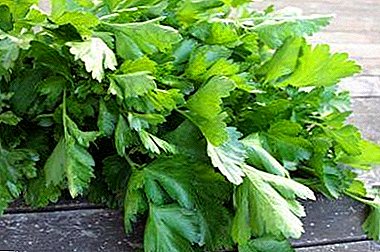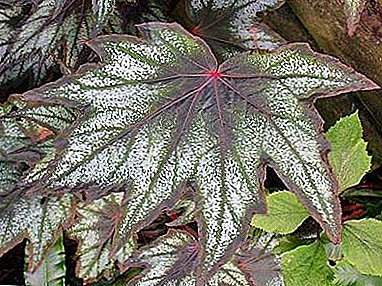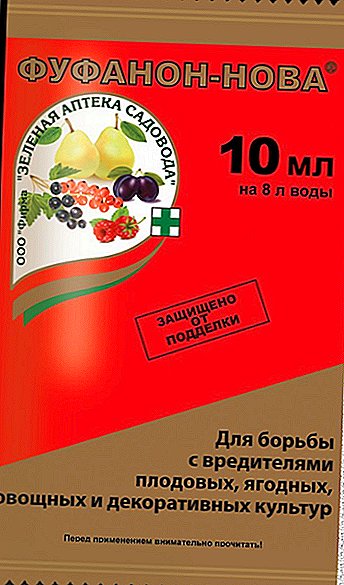 When external factors contribute to the intensive development of harmful insects, and mechanical methods against them no longer work, there comes an hour of chemical treatments. Moreover, each owner of the backyard area is looking for a high-speed effective remedy. In the state register of pesticides and agrochemicals permitted in Ukraine, more than 10 thousand drugs are charged, but in this article we will pay attention only to one of them. Let's try to figure out what Fufanon is, how it acts, what pests it affects and how dangerous it is for the environment.
When external factors contribute to the intensive development of harmful insects, and mechanical methods against them no longer work, there comes an hour of chemical treatments. Moreover, each owner of the backyard area is looking for a high-speed effective remedy. In the state register of pesticides and agrochemicals permitted in Ukraine, more than 10 thousand drugs are charged, but in this article we will pay attention only to one of them. Let's try to figure out what Fufanon is, how it acts, what pests it affects and how dangerous it is for the environment.
Important! When buying pesticides, pay attention to the packaging, holograms, literacy instructions on the use of the drug and the price. Counterfeits are often cheaper, with gross grammatical errors, without the specified information about the manufacturer, place of packaging, date of manufacture and useful life. Therefore, to make such acquisitions safer in specialized stores that care about their image.
"Fufanon": drug description and release form
The drug was developed by the Danish company "Keminova AGRO A / S", belongs to the phosphorus-organic insecticides of broad spectrum. In Ukraine, it is registered as a means for processing: winter wheat, sugar beet, peas, sunflowers, hops, cabbage, apple trees, plums, vineyards, watermelons, melons, poppy seeds, champignons, flour in bags and not loaded storage facilities. On the garden plots, the pesticide is widely used to control bedbugs, ants, cockroaches and fleas.
 Fufanon specializes in the destruction of sucking, gnawing and complex pests, and is also used as a remedy for ticks. In the field the protective function of the drug lasts up to 2 weeks after spraying, and indoors up to 21 days. "Fufanon" is produced in the form of 57% or 47% of the emulsion concentrate, usually in 5 ml ampoules or 10 ml in bottles, as well as in plastic cans with a capacity of 5 liters.
Fufanon specializes in the destruction of sucking, gnawing and complex pests, and is also used as a remedy for ticks. In the field the protective function of the drug lasts up to 2 weeks after spraying, and indoors up to 21 days. "Fufanon" is produced in the form of 57% or 47% of the emulsion concentrate, usually in 5 ml ampoules or 10 ml in bottles, as well as in plastic cans with a capacity of 5 liters.
With proper use of the drug "Fufanon" with strict observance given in the instructions for use of the recommendations, it will not have a toxic effect on the treated plants.
Active ingredient and mechanism of action
The described chemical is an oily emulsion, which is poorly soluble, has no color, is prone to boiling at +157 ° C, and it begins to melt at + 28 ° C. The insecticide analyzed is not an innovation. The fact is that the composition of "Fufanon" contains the previously known active substance malathion in the ratio of 570 g / l, which is less toxic and in terms of its action close to karbofos. The active ingredient is a phosphorus compound. It affects parasites through direct contact, ingestion into the intestine, as well as poisoning by toxic fumes.
 As a result, the enzyme acetylcholinesterase is inhibited, the transmission of nerve impulses fails, paralysis and insect death. Fumigation properties enhance the contact and intestinal reactions: within an hour, the pests cannot eat, and complete paralysis breaks them during the day. However, wet weather and mature age of beetles slow down the biochemical processes of the drug’s effect, therefore, in order to prolong its effect, make sure that the sprayer is adjusted to evenly spray very small particles.
As a result, the enzyme acetylcholinesterase is inhibited, the transmission of nerve impulses fails, paralysis and insect death. Fumigation properties enhance the contact and intestinal reactions: within an hour, the pests cannot eat, and complete paralysis breaks them during the day. However, wet weather and mature age of beetles slow down the biochemical processes of the drug’s effect, therefore, in order to prolong its effect, make sure that the sprayer is adjusted to evenly spray very small particles.
Did you know? Fighting parasites can be the most affordable - biological way. For example, tomatoes in the neighborhood with cabbage, agrus, currant, coriander, apple or pear will not only scare the pinworms, aphids and fire eggs, but also prevent the development of certain diseases. Apple trees will protect raspberries from gray rot.
Instructions for use "Fufanona" how to make a solution for the treatment of plants
The expected result depends on the quality of processing of plants, on the appeared parasites. Insecticide "Fufanon" measured spray on the source of infection until it gets wet, not leading up to the flow of toxic chemicals from the foliage. Of course, for this you need to stock up with a sufficient amount of working solution. Before preparing it, carefully read the manufacturer's recommendations.
The solution is prepared at the rate of 1 liter of water per 1 ml of poison, respectively, the contents of a 5-ml ampoule are dissolved in 5 l of water. In greenhouses on cucumbers, only 1 treatment with the drug from complex pests “Fufanon” is allowed, on tomatoes - 3. To organize the procedure, taking into account the time of fruit ripening. After it is recommended not to eat vegetables for a week. On the open ground, regardless of the type of cultivated crop, 2 spraying is possible. Moreover, the latter is carried out 3 weeks before harvest. This insecticide is sensitive to precipitation and weather conditions, so the plants should be sprayed 2 hours before the rain. It is better to do this in the morning or evening, in dry, calm weather.
 When large-scale processing of field crops, you need 200 - 400 liters of working fluid per hectare. For processing "Fufanon" citrus, apple, pear, quince, plums, cherries and sweet cherry specified in the instructions for use in the garden, the working solution consumption is 2-5 liters per 1 tree. Similarly, in the fight against mealybug or spider mite on grapes.
When large-scale processing of field crops, you need 200 - 400 liters of working fluid per hectare. For processing "Fufanon" citrus, apple, pear, quince, plums, cherries and sweet cherry specified in the instructions for use in the garden, the working solution consumption is 2-5 liters per 1 tree. Similarly, in the fight against mealybug or spider mite on grapes.
For the processing of vegetable crops (cabbage, cucumbers, tomatoes, peppers), for the complete destruction of pests will need from 1 to 3 liters of liquid. On watermelons, melons and strawberries consumed about 5 liters per 10 m². In the berry, for pollination of currants and gooseberries will need about 1.5 liters of solution, and for raspberries and blackberries - about 2 liters. For roses, flower and decorative crops, the recommended rate of "Fufanon", according to the instructions for use for houseplants, is one and a half liters per 10 m².
Important! If you ignore the requirements and carry out disinfection measures on a foggy or rainy day, the entire chemical will wash off into the soil, not having time to act on the parasites. The roots will pull the poison, a significant part of it will settle in the fruit. This is especially true of potatoes, tomatoes, cucumbers, beets and carrots.For berry bushes and fruit trees, "Fufanon" is used when the garden is sprayed in the spring, about 2-3 weeks before flowering, as well as leaves after falling. For an enhanced effect, the manufacturer recommends using ground-mounted or garden fan-mounted sprayers. Indoor, floral, ornamental and vegetable crops are disinfected at the first signs of parasite life. Removing weeds and weeding in the treated beds will be safe for humans only after 10 days.
 "Fufanon" as a remedy for bed bugs according to the instructions, it is recommended to use in diluted form in a ratio of 1.5 - 3.5 ml per 1 liter of water (if the drug is in ampoules, the calculation of the proportions is the same as for plants - 1: 1). To get rid of cockroaches and ants - the ratio of 9-11 ml per 1l. The emulsion can be sprayed out of the spray or with a soft brush. The consumption rate per 1 m² is about 100 ml.
"Fufanon" as a remedy for bed bugs according to the instructions, it is recommended to use in diluted form in a ratio of 1.5 - 3.5 ml per 1 liter of water (if the drug is in ampoules, the calculation of the proportions is the same as for plants - 1: 1). To get rid of cockroaches and ants - the ratio of 9-11 ml per 1l. The emulsion can be sprayed out of the spray or with a soft brush. The consumption rate per 1 m² is about 100 ml.
When processing, special attention should be paid to hard-to-reach places, crevices, plinths. To achieve the desired result, the room is carefully treated around the perimeter, including behind furniture, carpets, paintings, and even in places of peeled-off wallpaper. If you miss at least one slot where an annoying pest could hide, all efforts are in vain.
In the conditions of a harsh winter, when there is more than -20 ° C outside the window, clothes and other household items can be brought out into the street. With a strong population of parasites, it is possible to repeat the procedure at intervals of 3-4 days, when the incubation of eggs laid by the bugs ends.
You can find similar products on sale. "Fufanon nova", "Fufanon super." These are the same products with the same active ingredient, but different manufacturers.
Important! In order not to provoke the addiction of parasites to Fufanon, agrochemists advise alternating insecticides from other classifications during disinfection.
The benefits of using "Fufanon" for plants
 Insecticide "Fufanon", as indicated in the instructions, has a wide spectrum of action, and therefore effective in combating all herbivorous pests. After analyzing the recommendations of the company-developer and consumer reviews, we came to the conclusion that the drug really deserves attention, especially considering all its advantages:
Insecticide "Fufanon", as indicated in the instructions, has a wide spectrum of action, and therefore effective in combating all herbivorous pests. After analyzing the recommendations of the company-developer and consumer reviews, we came to the conclusion that the drug really deserves attention, especially considering all its advantages:
- the desired result can be obtained after 24 hours;
- proper effect guaranteed by the manufacturer;
- after treatment there is no unpleasant smell;
- relative ease in preparing the solution and processing of plant crops;
- low consumption of funds;
- versatility (the ability to process fruit, berries, vegetables, flowering, indoor and ornamental plants);
- fumigation;
- affordable price.
Safety measures when using the drug
"Fufanon" is a low-toxic insecticide for humans and highly dangerous for bees. However, consider toxicity and do not neglect your health. ATAll work with the pesticide should be carried out in special clothes, respirator, goggles, rubber gloves and boots. Do not plan the processing of plants in hot weather, follow the instructions clearly. It is strictly forbidden to eat, smoke, drink alcohol at the same time. It is also recommended to limit the contact of hands and face as much as possible. Do not forget to check the serviceability of the sprayer and configure it for the correct distribution of the poison. When treating the premises with Fufanon-Nova, pay attention to the instructions for use, as well as the dosage of the solution for bedbugs. It is possible to work with an insecticide no more than 3 hours.
Did you know? Most modern pesticides are much safer compared with drugs. For example, table salt has LD50 (the dose of the drug that causes the death of 50% of laboratory animals) is 3750 mg / kg, caffeine is 200 mg / kg, aspirin is 1750 mg / kg, and herbicides are 5000 mg / kg.
 During processing in the house there should not be children, pets, including fish. Remove even indoor flowers. Open the windows. You can use the apartment again after one day, after you wash everything thoroughly with a soda solution (300 g of soda per 10 liters of water). Insecticide has the ability to maintain protective functions in the room up to 4 weeks, but under the influence of heat and light loses them.
During processing in the house there should not be children, pets, including fish. Remove even indoor flowers. Open the windows. You can use the apartment again after one day, after you wash everything thoroughly with a soda solution (300 g of soda per 10 liters of water). Insecticide has the ability to maintain protective functions in the room up to 4 weeks, but under the influence of heat and light loses them.
Protective clothing can only be removed after disinfection is completed. Do not forget to wash your hands with soap, wash and rinse your mouth. If the poison gets on the skin, it is removed without rubbing with cotton wool, then washed off with running water or a weak solution of soda. In cases of contact with the eyes, rinse with plenty of water for 15 minutes. If ingested and irritated mucous membranes seek medical attention. It is important to keep the insecticide packaging label. Be attentive to your well-being. The first signs of poisoning are manifested by nausea, general weakness, convulsions and impaired coordination of movement. If you have similar symptoms, immediately call a doctor and leave the room to fresh air.
Before the arrival of the doctor, take a solution of crushed activated carbon with the calculation of 3-5 tablespoons per glass of water. If symptoms persist, induce vomiting.
 It is unacceptable to contaminate the sources, reservoirs, wells with the remnants of the solution. Also near them you should not pour out the water after cleaning contaminated in the process of working containers and equipment. Knapsack sprayer washed daily, re-treating the culture with plain water. Emptyed containers after agrochemistry need to be burned, without inhaling smoke and released particles. During the period of spraying the garden and after that, within a radius of 4-5 kilometers, the flight of bees is restricted to 120 hours. Special vigilance should be exercised if children and pets walk in the yard.
It is unacceptable to contaminate the sources, reservoirs, wells with the remnants of the solution. Also near them you should not pour out the water after cleaning contaminated in the process of working containers and equipment. Knapsack sprayer washed daily, re-treating the culture with plain water. Emptyed containers after agrochemistry need to be burned, without inhaling smoke and released particles. During the period of spraying the garden and after that, within a radius of 4-5 kilometers, the flight of bees is restricted to 120 hours. Special vigilance should be exercised if children and pets walk in the yard.
Did you know? Insecticides are not invented by people, but by nature. In the process of fighting for a place in the sun, many plants began to produce substances that poison their neighbors and insects that chose their stems and roots. Scientists estimate that plants produce 99.99% of all toxic chemicals on the planet. At the same time, the substances synthesized by them are also capable of causing various diseases, including oncological ones.
Compatibility with other drugs
The manufacturer strictly forbids combining "Fufanon" with anything. However, experts from the agricultural industry talk about combining the pesticide with other insecticides of the same type in terms of use. It is not recommended to combine the product with oils, Bordeaux mixture, compounds which contain copper and calcium, as well as preparations with alkaline reaction, mineral fertilizers based on sulphides. Follow the instructions for safety!
How to store "Fufanon"
 With a temperature range of -30 ° C to + 30 °, the insecticide can be stored for 3 years in unopened form. Find a place for him away from children, animals, medicine, food and light. The sun's rays provoke chemical reactions, as a result of which the main properties of the drug are lost. It is unacceptable to preserve the remnants of the working solution, so clearly prepare the necessary dosage and fully use it.
With a temperature range of -30 ° C to + 30 °, the insecticide can be stored for 3 years in unopened form. Find a place for him away from children, animals, medicine, food and light. The sun's rays provoke chemical reactions, as a result of which the main properties of the drug are lost. It is unacceptable to preserve the remnants of the working solution, so clearly prepare the necessary dosage and fully use it.


